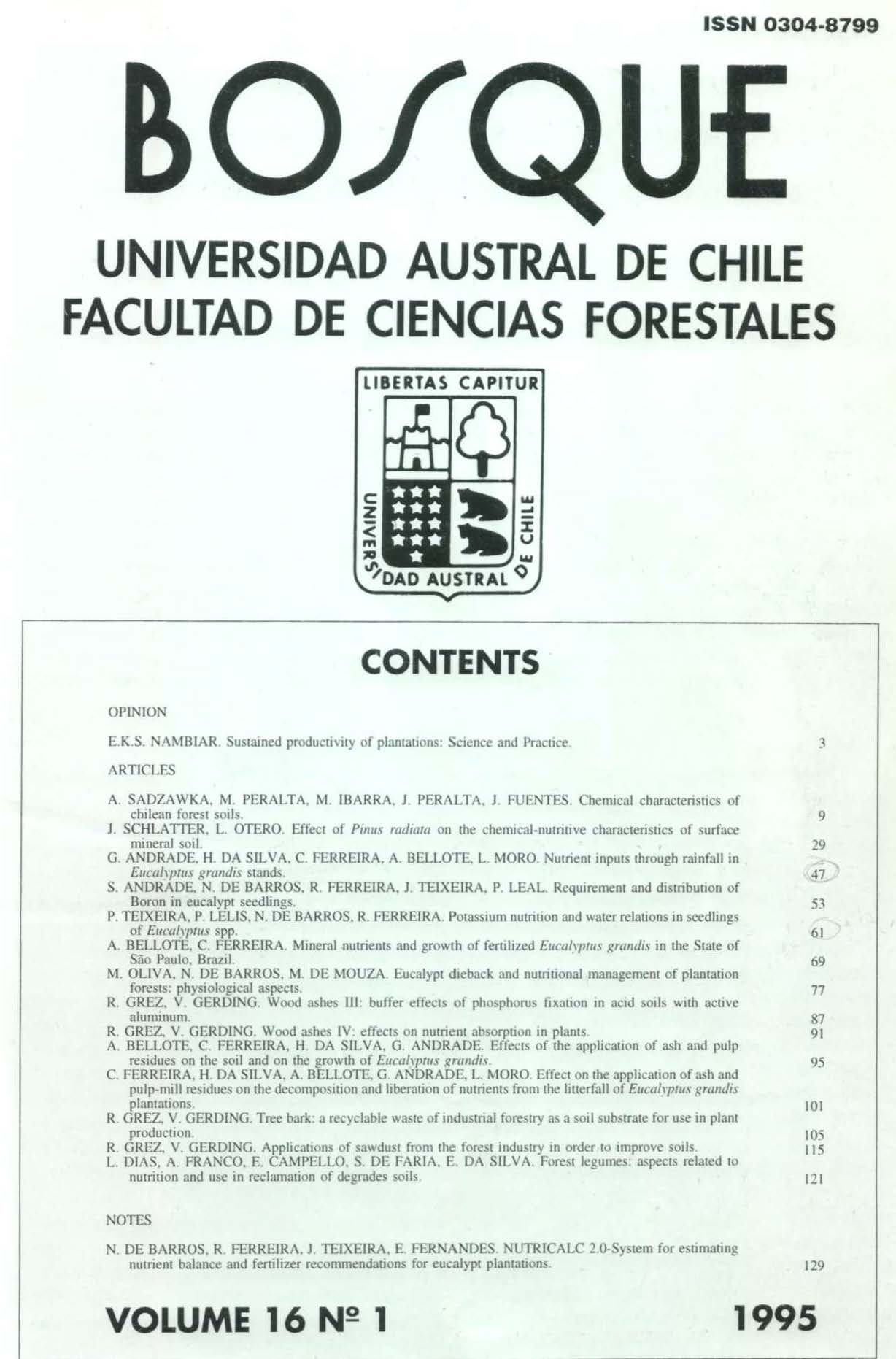Effect of Pinus radiata on the chemical-nutritive characteristics of surface mineral soil
Main Article Content
Abstract
This paper relates two studies, each of which compared forest floor and upper mineral soil horizons between firstrotation Pinus radiata (21-27 years old) and secondary native forest of similar age and growth. The first study was carried out near Valdivia, Chile (39°45'S; 10-150 m above sea level) on red clay soils of the Los Ulmos series (Ultisols). The second was carried out near Collipulli, Chile (38°S; 500-600 m above sea level) on holocenic volcanic ash soils of the Santa Barbara series (Andisols).
Pinus radiata plantations contained a moder humus of loose structure, but slow decomposition given the regional climatic conditions. The native forest contained a mull humus with rapid decomposition, however, a moder humus was found in the higher elevations with colder climates.
The morphology of the organic layer under native forest showed good incorporation into the mineral soil, indicating the importance of soil fauna in producing a well-structured, well-mixed profile. In contrast, under P. radiata plantations the limit between organic and mineral soil is easily distinguishable, soil fauna plays a lesser role, and the rate of decomposition is lower.
These differences are caused by the chemical-nutritive features of pine litter, which is poorer in calcium and nitrogen, and richer in inhibitory substances such as resins, waxes, and lignon. These substances, along with the greater fungal activity in pine litter, causes a more acidic organic layer, which in turn affects mineral soil. This acidity is less of a problem on sites (such as Collipulli) with higher base reserves and cation exchange capacity, but on sites with a lower buffering capacity, the acidity can reduce soil fertility in the medium term.
The aggressive behavior of P. radiata makes it suitable for colonization of recently cleared or eroded soils; however, in other situations it should be controlled through silvicultural practices to maintain medium- and longterm regional soil fertility.

